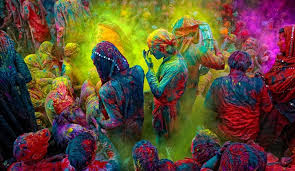
.jpg)
Sikhs assign quite a different meaning to Baisakhi, and if you happen to be in a Punjabi village to catch the men performing the wild bhangra dance, you’ll get the clear picture.
This strenuous dance tells the story of the agricultural process, from tilling the soil through harvesting.
As the dholak (drum) changes beats, the dancing sequence progresses, dramatizing plowing, sowing, weeding, reaping, and finally celebrating. Baisakhi also commemorates the day in 1689 when Guru Gobing Singh founded the Khalsa, the fighting Sikh brotherhood that donned the distinctive Sikh outfits.
Baisakhi has special significance for two of India’s major religious groups.
For the Hindus, it is the start of the New Year, and is celebrated with requisite bathing, partying, and worshipping. It’s believed that thousands of years ago, Goddess Ganga descended to earth and in her honor, many Hindus gather along the sacred Ganges River for ritual baths.
The action is centered in the holy cities along the Ganges in north India, or in Srinagar’s Mughal Gardens, Jammu’s Nagbani Temple, or anywhere in Tamil Nadu.
Hindus plant poles (wrapped in flags of god-embroidered silk) in front of their homes, and hang pots of brass, copper or silver on top.



.jpg)



